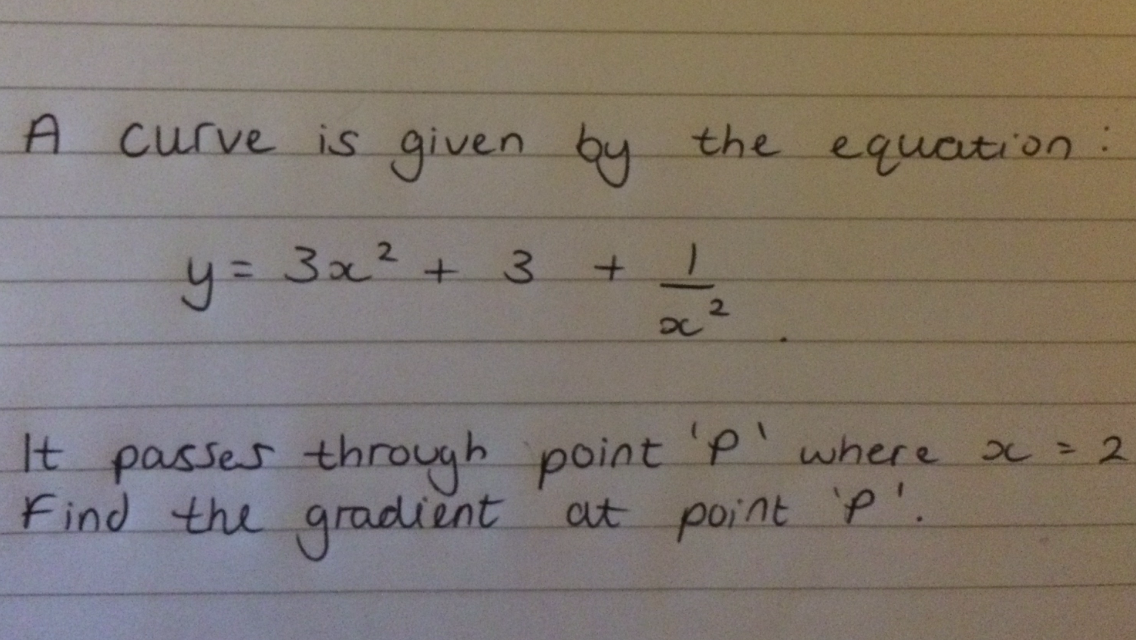Assuming you know how to differentiate equations; lets begin.

Here is an example of a common question that involves dy/dx:
First of all breaking down the question it is basically asking you to differentiate the equation, then substitute the value of x to find the gradient at point P.
This is simply done and using simple algebra and substitution we can derive that the gradient has a value of 11.
Very Easy...
We could also be asked this question:
The steps to approaching this would be to:
1) Use the gradient we have already found to find the gradient of the normal.
2) Use substitution to find the value of y
3) Use the new values to find the value of c and complete the equation.

The image below shows using -1/m to find the perpendicular gradient.
Then we use the original formulae of the curve to find the value of y, as shown here -------->

We then substitute the values of x and y into our new equation in the form of:
y=mx + c
We then find that c = 15.48.
We now have the equation as shown :)










